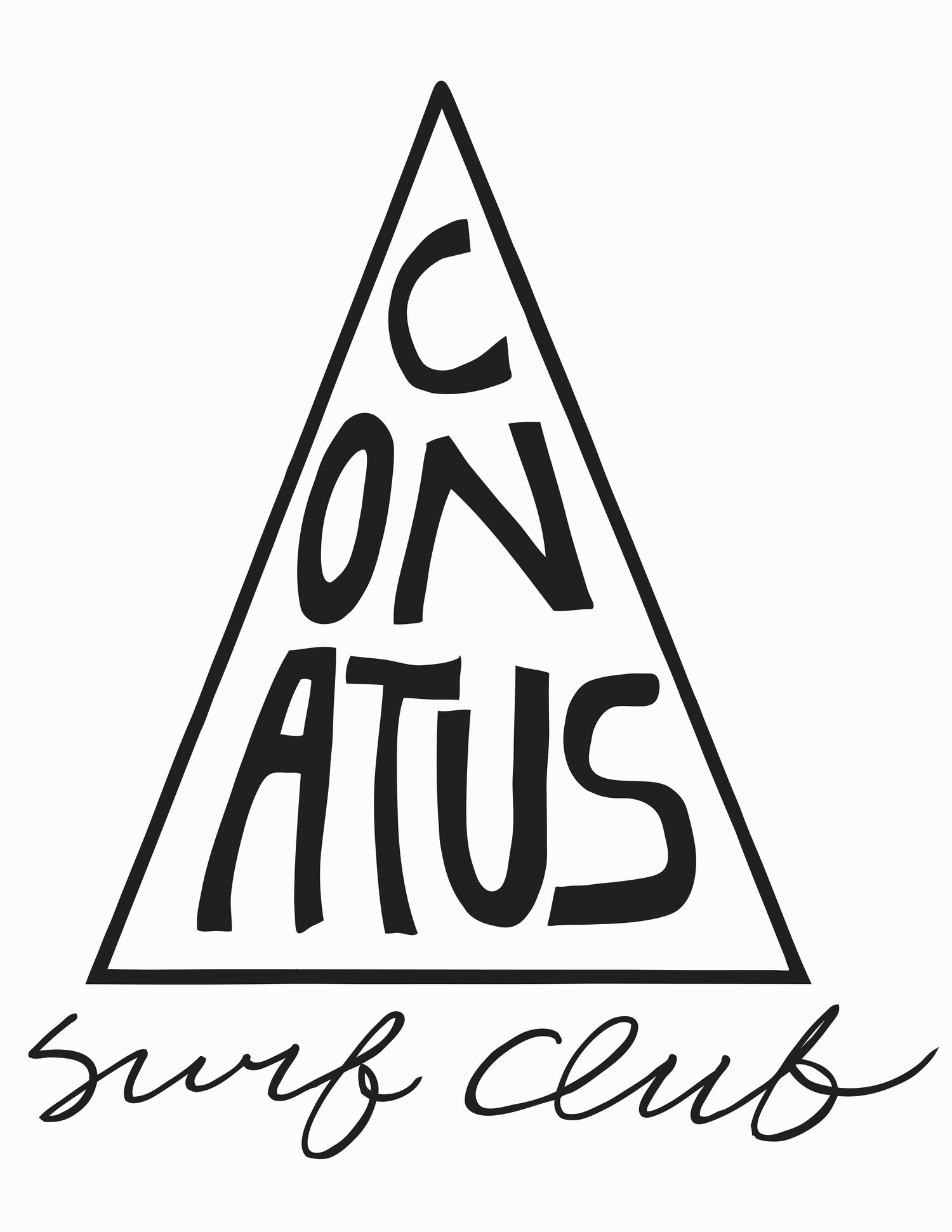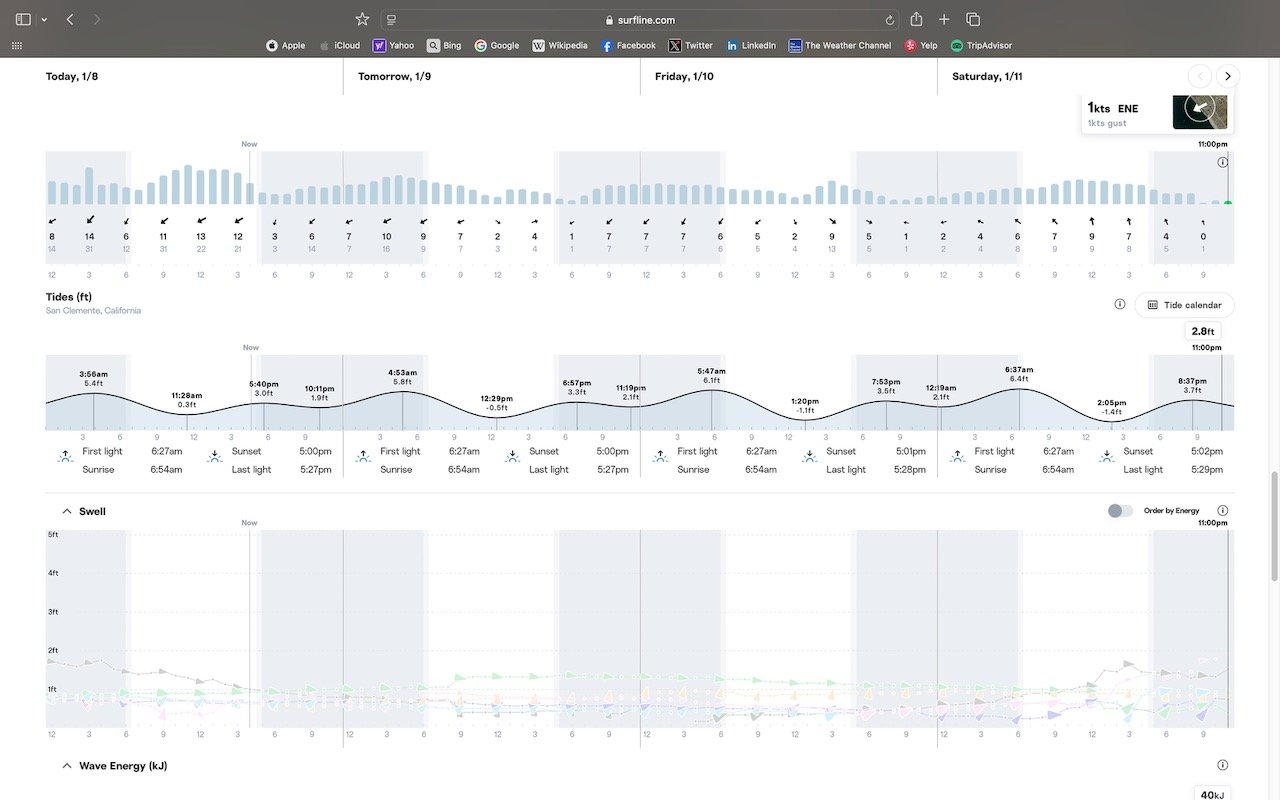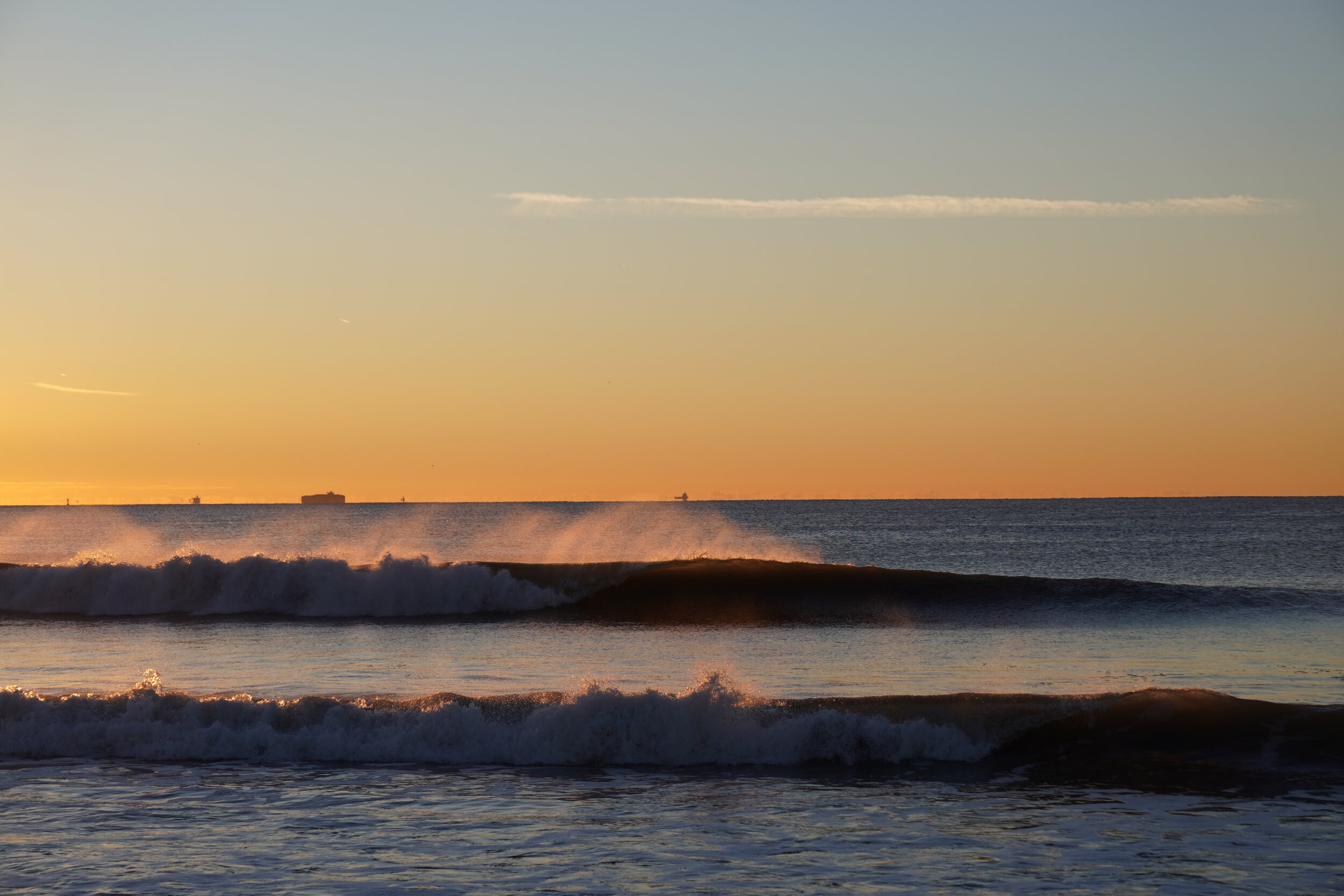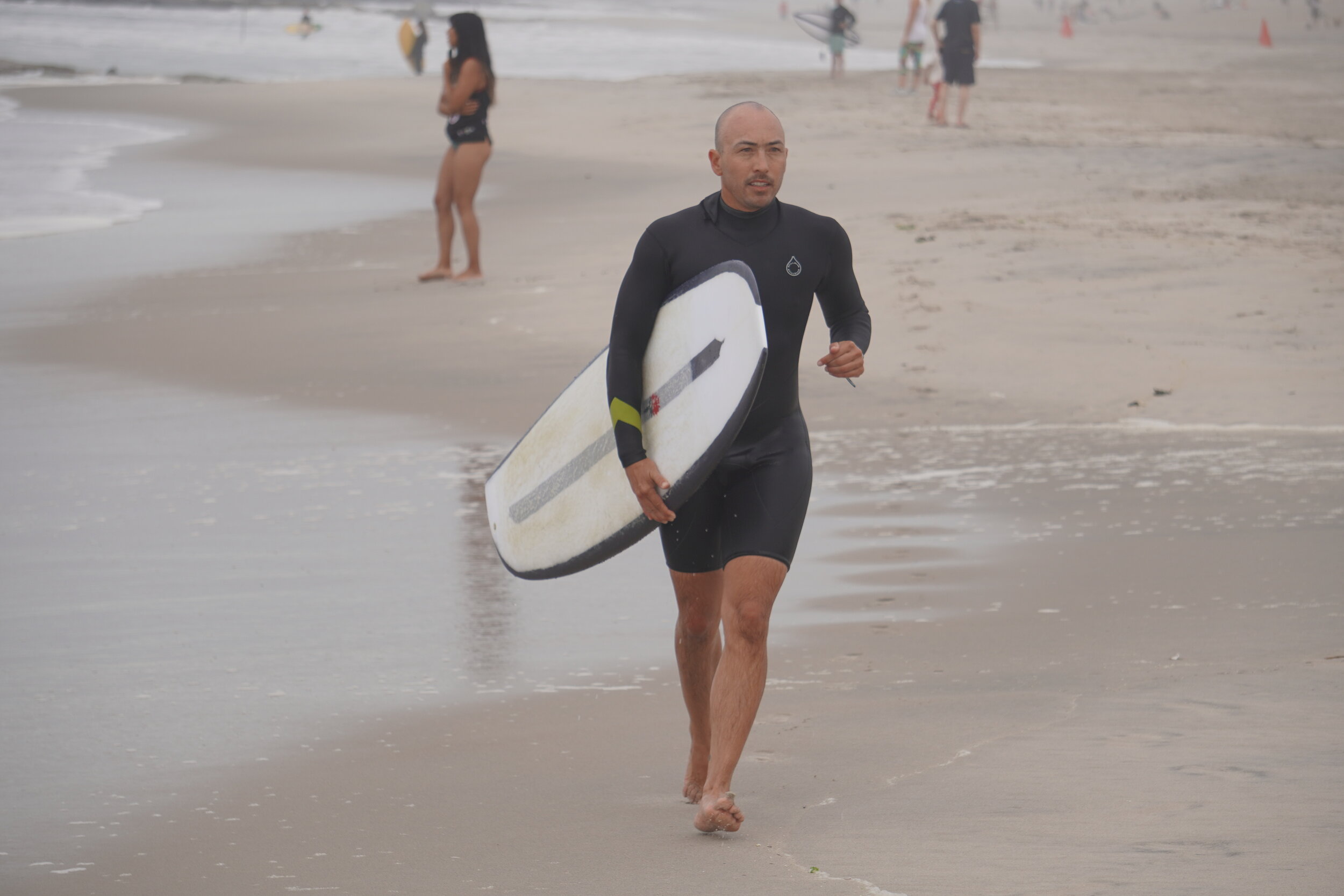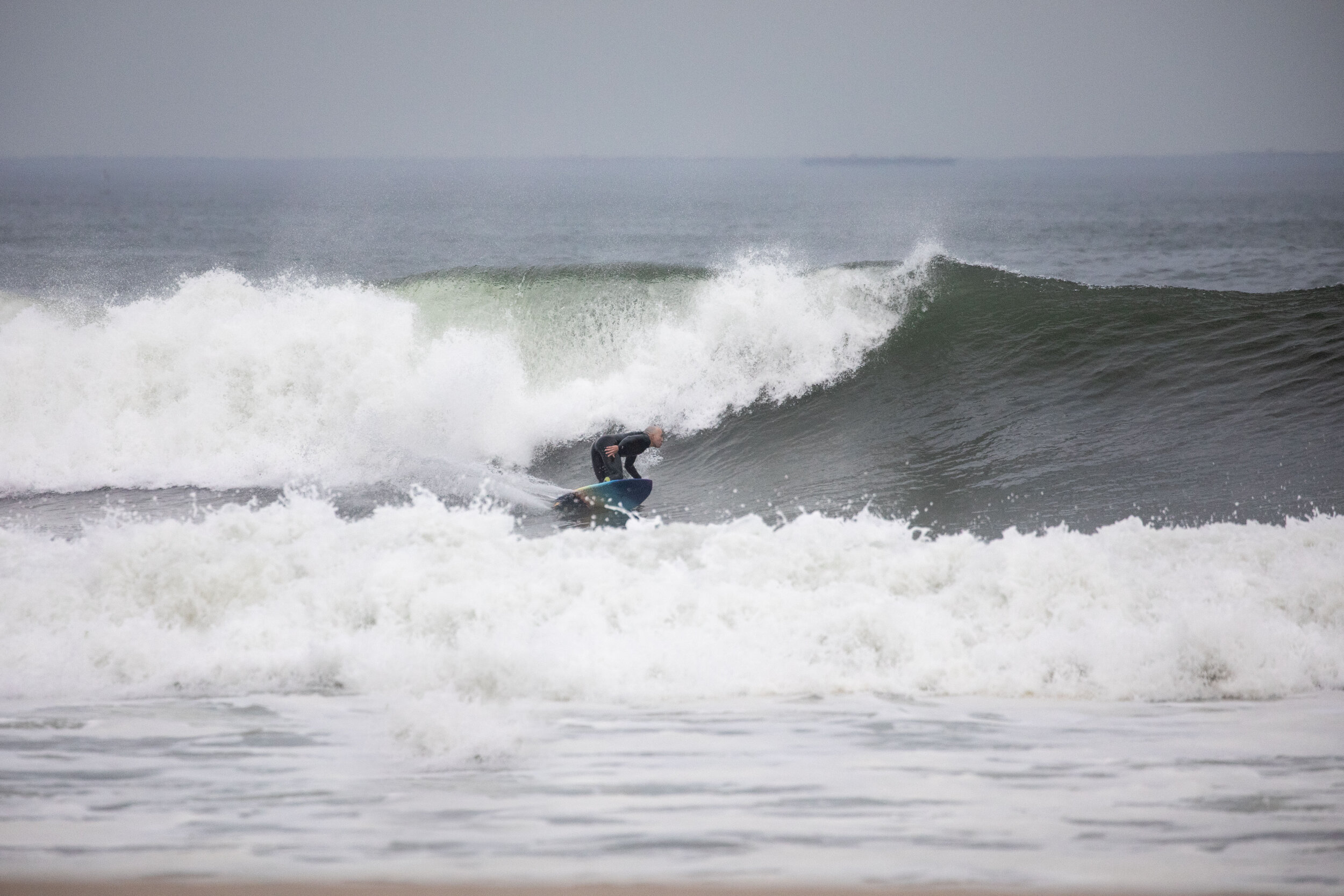The first thing you need to know about how tides affect surfing is that while tides are a cosmological/global phenomenon, how they operate in terms of surf conditions varies widely from location to location. That said, it’s good to get some basic information down about tides before we move into determining “the best tides for surfing.” In what follows I’m going to lay out very basic tide science. Then I will tell you how to find out about tides for surfing in the area(s) you plan to surf.
Fig. 1
Basic Tide Science
Fortunately we’ve been able to observe and measure the heavens and the oceans long enough to determine basic phenomena. This science continues to develop as we continue to make more observations and measurements. I say that to underscore that I am explaining the current scientific understanding. It has changed over time — we no longer think gods move the sun around the earth via charioteer — and it will likely change again.
Earth’s surface is 71% water and 97% of that is the ocean. It is the case that all of the earth’s physical stuff – rocks, magma, minerals – is moving in the broadest sense of movement, and all the stuff – water, gasses, air – moves at different rates. Water, it happens, is particularly moveable, sloshy stuff, and with all of this movement, well it sloshes a lot, except of course when it’s frozen (but we’ll table that for now). Ever sit in a bathtub and move a little and see the water sloshing up the sides of the tub? Or try to carry an overfull cup of coffee across a crowded cafe and not try to spill any on your shoes as it sloshes over the rim? Or what about when you sit down to drink the coffee and it’s really hot and you blow your breath over the top and watch it ripple, effectively moving the coffee (which is just caffeinated water) within the cup? On the most basic of basic levels tides are a manifestation of the sloshing caused by the overall relationship of the earth, moon, sun, and the rest of the cosmos, in addition to the various factors that affect the water on earth itself.
It is common to think of the cause of this sloshing as “gravity.” And for now you can think of it that way. There’s a little more to it than that, and we can nerd out on that at a later date. For now let’s just use the common notion of gravity. The moon rotates around the earth and the earth/moon combo rotates around the sun. Because the moon is closer to the earth and its orbits are tighter it exerts more force or pull, which creates essentially two large bulges of water on either side of the earth. In its daily rotation, the earth basically moves into and out of these bulges (see Fig. 1).
So the sloshing can be thought of both as the water being pulled and pushed and as the earth moving into areas of higher and lower water. The push and pull from the moon — the bulges —, however, remain relatively constant. The bigger factor in determining general, global tide size is . . . The sun!!! Whhhaaaat?! Yeah, I know, you didn’t read that on any surf website yet, right? Well, it’s true. The sun’s gravitational pull has a larger effect on how high and low the tides are than the moon’s does.
Fig 2.
In Fig. 2 you can see what we call syzygy. Syzygy is two Greek words — syz from syn — which means “with” — and gy from ge — which means “earth.” So syzygy is when the moon and the sun are lined up with earth. This creates both full and new moons, and on full and new moons we have what are called spring tides. Remember that the bulges of water created by the moon are always there, so when it’s lined up with the sun you get that extra bigness from the sun’s gravitational pull. All you need in order to find out whether the tides are spring, is a moon calendar. If it’s full or new you can bet the high tides will be higher than usual. And that’s another key. It’s not that the tides are more extreme, per se, but that the highs are significantly higher. What does that mean for surfing? Just that however the place you’re planning to surf reacts to high tide, it will have that reaction even more when it’s a full or a new moon.
Fig. 3
In Fig. 3 the moon, sun, and earth are not in syzygy. This is when the sun’s gravitational pull is not lined up with the moon’s. This creates what are called neap tides. True neap tides are, as the picture shows, when the sun and the moon are at about a right angle from one another. In this time of the lunar/solar cycle, the sun exerts a counteracting force on the moon. The bulges are smaller and the tides are overall lower. What does this mean for surfing? You can expect a smaller tidal swing overall, and for the lowest tides to be during a neap cycle. So, if the place you’re planning to surf is affected (for better or worse) by low tides, you can expect those lows to be lower during neap tides.
Types of Tides
Diurnal Tides
Diurnal tides happen only 2x a day, i.e., there is only one high and one low tide in a 24 hour period. These change in approximately 50 minute increments in a 24 hour cycle. If it was low tide at 6a on Monday, it will be high tide at 6p that same day. On Tuesday the low tide will be roughly at 6:50a and on and on.
Fig. 4: Diurnal tides near Perth, Western Australia
Semidiurnal Tides
Semidiurnal tides happen 4x day, i.e., there are two high and two low tides in a 24 hour period, alternating about 1x every 5 hours and 50 minutes, and shifting up an hour each day. So if it was low tide at 6a on Monday, it will be high tide around 11:50a that day, low tide again around 5:50p, and high again around midnight. The next low tide will move be around 7a on Tuesday and so on. Semidiurnal tides can be equal or unequal.
Semidiurnal equal Tides
Both low tides and high tides in a given 24 hour period are similar heights. That is to say, the heights of each high are nearly equal, and the heights of each low are nearly equal. NY/NJ is an example of semidiurnal equal tides:
Fig. 5: Semidiurnal equal tides in Rockaway Beach, NY
Semidiurnal unequal tides
The two low and two high tides in a given 24 hour period are are unequal. That is to say, there will be a much larger difference in the heights of the two highs and the heights of the two lows. The CA coast provides a textbook example of semidiurnal unequal tides:
Fig. 6: Semidiurnal unequal tides in Southern CA
Slack tide
Also known as “the top of the tide.” This is when the tide is at peak high or low and is neither moving in nor out. At many surf breaks the waves can go dead during slack tide (not everywhere at all times, but if you’re wearing a tide watch and you notice that a long lull corresponds to the peak tide, that’s a slack tide).
Outgoing tide
This is when the tide has hit peak high, gone through the slack period, and is now “moving back out.” In some surf breaks outgoing tide can dampen swell coming in. In others it can drain just enough water off of the bottom to make it possible for waves to break.
Incoming tide
This is is when the tide has hit peak low, gone through the slack period, and is now “coming back in.” In some cases an incoming tide can increase swell height. It is not the case that all breaks are better at incoming tide. Nor is it the case that incoming tide generates swell on its own. There has to be swell already in the water (generated by winds much further out to sea) in order for incoming tide to be of any help at all in terms of creating waves when there previously were none or very few or in making an already existing swell a few feet larger (creating an additional “pulse” in the swell).
King Tides
Fake news. According to NOAA, a king tide is a non-scientific term used to describe exceptionally large tides, which are more accurately described as spring tides (see Fig. 2), and occur during full and new moons and when the sun and the moon are closest to the earth (perigee). King, or more accurately, spring tides simply make the high tides higher. This can be good or bad depending on the break you’re surfing. The water will be deeper and closer to shore (see video above).
So what is the best tide for surfing?!
Based upon this very basic outline of the tides, the best tide for surfing varies location to location. Put differently, there is no best tide for surfing. Do not trust or believe any website, instructor, coach, or pamphlet that says one tide is best across the world. It’s simply not the case. If we took a survey of all the world’s surf breaks, we might find that overall mid tides (neither too high nor too low) have a slight advantage over all other tidal possibilities, but that would still be mere conjecture.
What Else Do I Need to Know About finding the best Tides for surfing?
I will cover all of these in greater depth in future articles, but here’s the general outline:
How to read a tide chart
How to access both general and local knowledge about what tides work best at the various breaks in a given area — start with general knowledge via the internet (websites like Surfline.com), but refine that knowledge once you get to your destination by asking locals, pros, and coaches
Determine what kind of bottom you’ll be surfing over. Here are your options:
Beach break — sand w/out jetties
Beach Break — sand w/jetties
Sand point break
Rock reef point break
Rock reef
Coral reef
Cobblestones
Mixture of sand and rock
Mixture of sand and coral
Mixture of sand and cobblestones
I hope you find this post useful. If you’d like to set up a consultation to determine what tides are best at a break you plan to surf, sign up HERE. If you want to know more about how tides interact with all of the other surfing variables, take my forecasting course HERE. If you’re interested in optimizing all aspects of your surfing experience, sign up for a surf journey consultation HERE. Remember to check out my YouTube channel and my online digital products and courses!
further reading
Tides: The Science and Spirit of the Ocean (2017) by Jonathan White
Waves and Beaches (2021) by Kim McCoy and Willard Bascom
